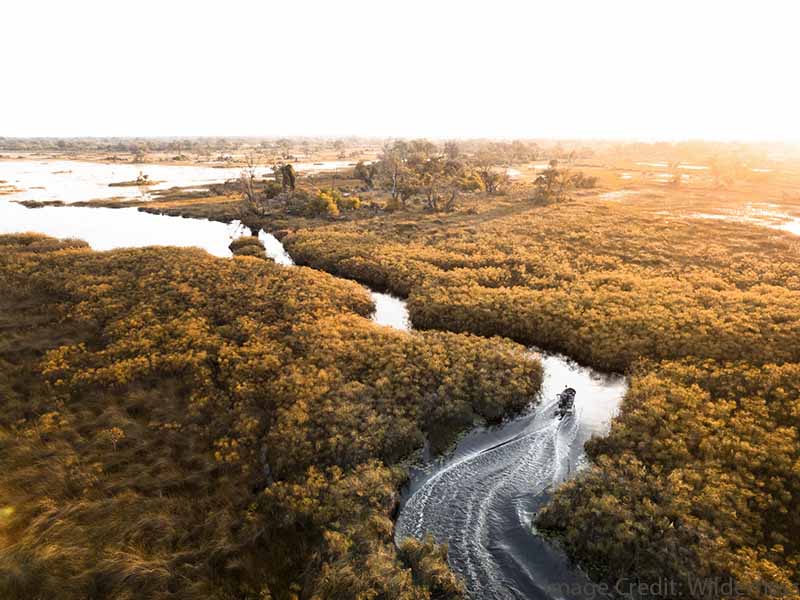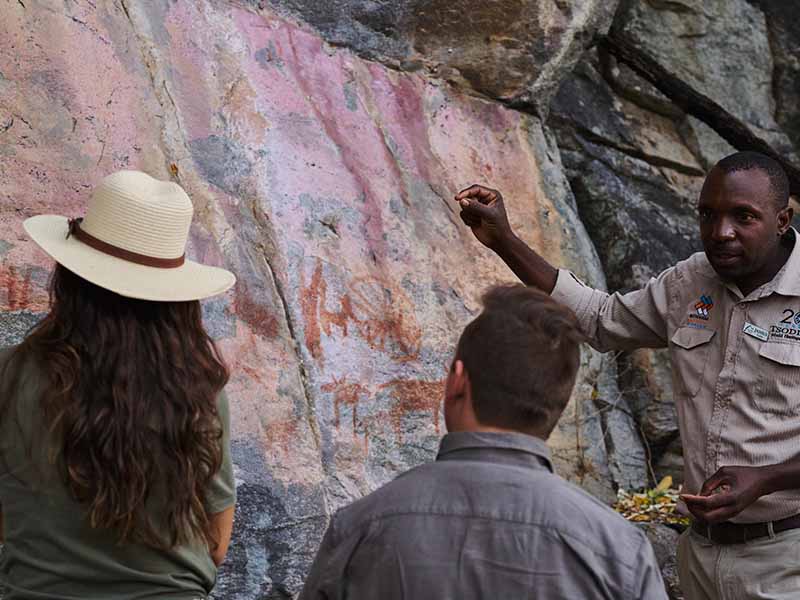Botswana’s UNESCO World Heritage Sites are a testament to the country’s rich cultural and natural heritage. From the ancient rock art of Tsodilo Hills to the breathtaking Okavango Delta, these sites not only preserve the nation’s history and biodiversity but also highlight its commitment to conservation. These protected areas play a crucial role in safeguarding endangered species, promoting sustainable tourism, and educating visitors about the importance of preserving the environment and cultural traditions for future generations. They are shining examples of Botswana’s dedication to maintaining its natural and cultural legacy.

In 2014, UNESCO’s World Heritage Committee officially designated Botswana’s iconic Okavango Delta as its 1,000th World Heritage Site—a fitting tribute to one of the world’s most extraordinary natural wonders. A shimmering maze of lagoons, winding channels, and lush islands, the Okavango Delta is a unique wilderness teeming with life, often called “the river that never finds the sea.” Set like a glittering jewel in the heart of the Kalahari Desert, it is a landscape where nature performs miracles.
The Delta stretches across north-western Botswana, a vast fan-shaped plain of permanent swamps and seasonally flooded grasslands. What makes the Okavango truly magical is its annual flooding during the dry season, transforming the delta into an oasis that supports one of the greatest concentrations of wildlife in Africa. The sheer variety of species here is breathtaking—from the endangered Cheetah and elusive Wild Dog to the majestic White and Black Rhino. The delta is also home to the world’s largest population of elephants, with 130,000 of these magnificent creatures relying on its life-giving waters. Additionally, 24 species of globally-threatened birds find refuge in this lush paradise.
Beyond its ecological significance, the Okavango Delta is a place of indescribable beauty. Picture-perfect sunsets paint the skies, while the wildlife experience is nothing short of magical. From tranquil boat rides through the waterways to thrilling game drives, the delta offers an unforgettable connection to nature. The Okavango is not just a destination—it’s an immersion into Africa’s soul, a place where you feel the rhythm of the wilderness and witness its raw, untamed power.
For those seeking the heart of Africa, the Okavango Delta is a must. Its unmatched beauty, rich biodiversity, and profound ecological importance make it a shining example of what World Heritage stands for—a celebration of the planet’s most precious treasures. Simply put, you haven’t truly experienced Africa until you’ve spent time in this iconic wilderness.
Ahnasa Recommends
- Game drives
- Guided bushwalks
- Mokoro or canoe safaris
- Motor boating
- Helicopter flights
- Fishing
Tsodilo Hills

Known as the “Louvre of the Desert,” Tsodilo Hills, a UNESCO World Heritage Site since 2002, is one of the world’s most extraordinary rock art destinations. Rising dramatically from the Kalahari Desert’s scrub bush, this mystical and magnetic site offers visitors an immersive journey into ancient human history and spiritualism. With over 4,500 preserved rock paintings in a concentrated area, Tsodilo holds one of the highest concentrations of rock art globally, each piece a silent enigma left by the ancestral San and Hambukushu communities.
The Hills – named Male, Female, and Child – carry profound spiritual significance. They are sacred grounds where rituals have been performed for thousands of years, with the San and Hambukushu seeking the assistance of their ancestors and asking for rain. The mysterious rock art, spread across the Hills’ faces, adds an aura of mystique to the site, with their meanings and symbolism still eluding interpretation.
Archaeological research suggests that Tsodilo has been inhabited for over 100,000 years, making it one of the oldest historical sites on Earth. Artefacts such as pottery, iron, shell beads, carved bones, and stone tools offer a fascinating glimpse into the past, dating back more than 90,000 years. Tsodilo’s archaeological records also provide a unique, chronological account of human activities and environmental changes over millennia.
Nestled in northwestern Botswana, near the Namibian border, Tsodilo Hills emerge from ancient sand dunes to the east and a dry, fossilised lake bed to the west. This striking quartzite rock formation has sheltered and sustained its inhabitants for centuries, creating a symbiotic relationship between humans and nature that continues today. The surrounding communities still hold Tsodilo in reverence as a sacred site, where ancestral spirits are believed to dwell. Visitors can feel this spiritual energy while exploring the ancient water holes, rock formations, and sacred landscapes revered by the Hambukushu and San people.
For those seeking a journey into the depths of history, culture, and spirituality, Tsodilo Hills offers an unparalleled experience, blending natural beauty with profound human heritage.
Ahnasa Recommends
- Hiking
- Rock art viewing
- Tour of the Tsodilo Museum
- Culture-based activities such as traditional song and dance, with the nearby community, Basarwa